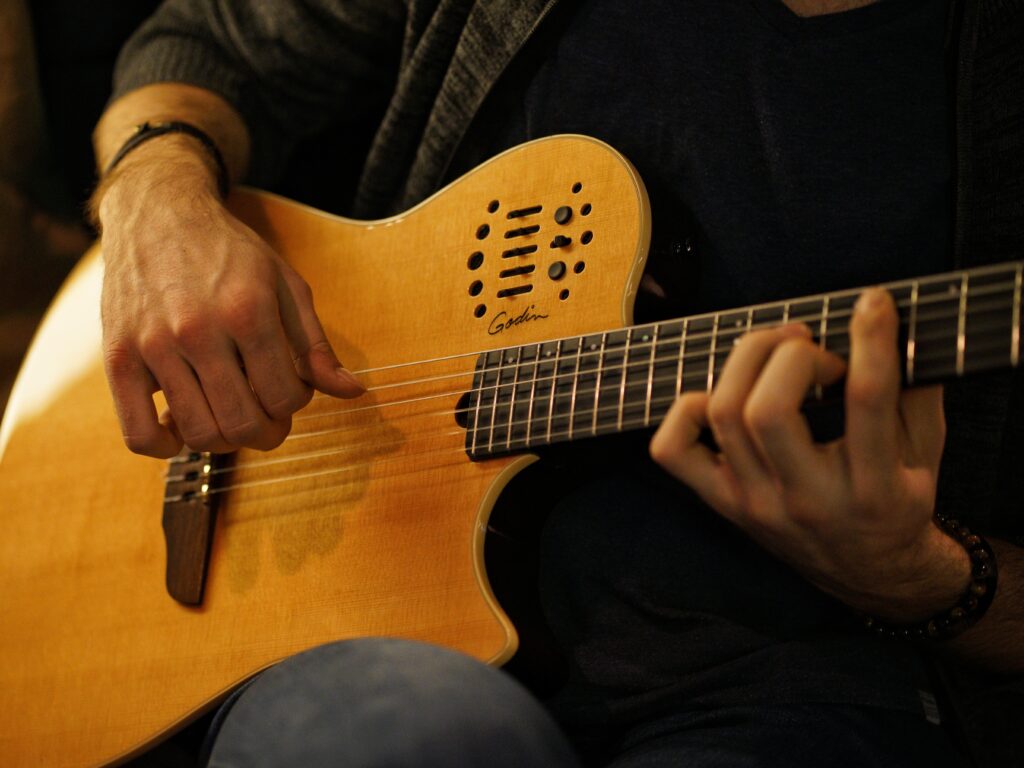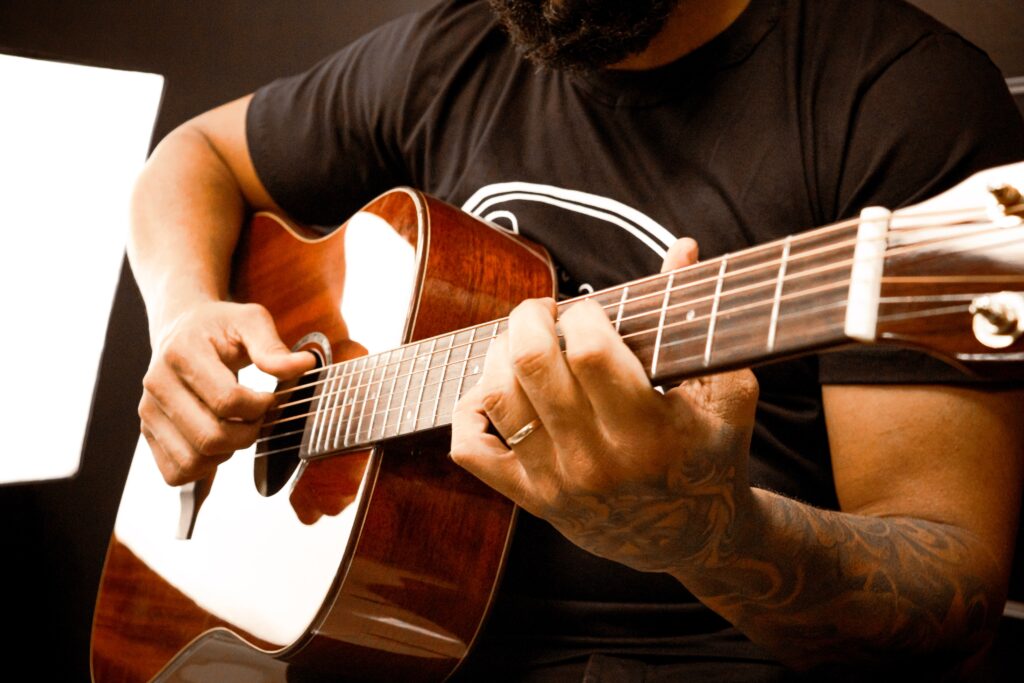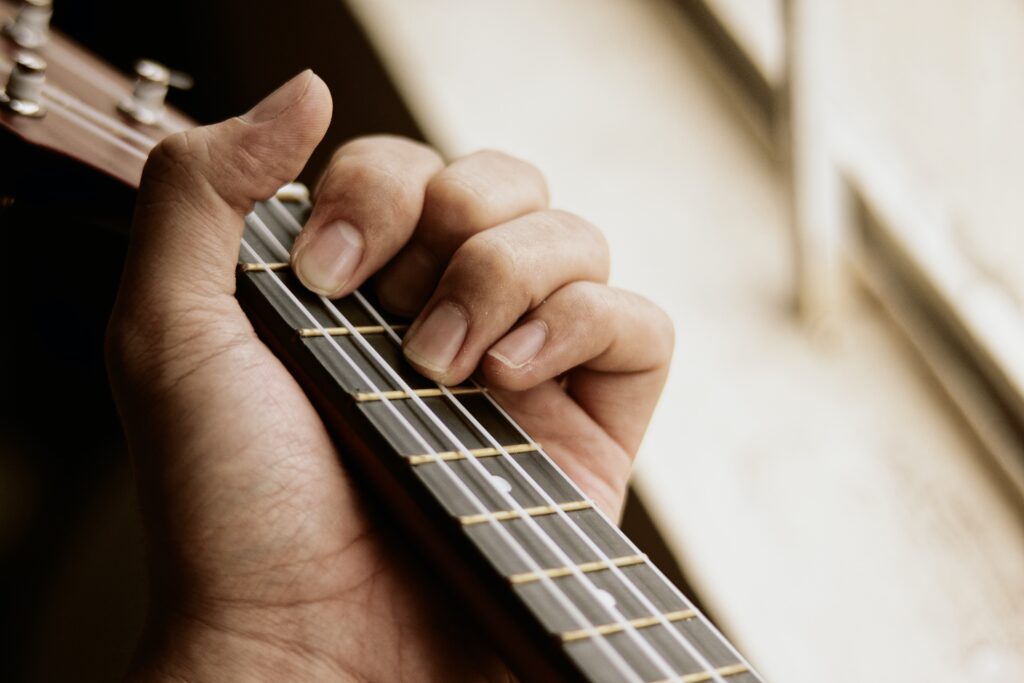Are you a guitar player looking to improve your playing skills? Taping your fingers is an important part of the process that can help you achieve optimal results.
Not only does it protect your hands from injury, but it also helps maintain finger strength and dexterity while playing. In this guide, we’ll show you how to tape your fingers for guitar playing so you can maximize performance and avoid potential injuries. So let’s get started!
Why do guitarists put tape on their fingers?
Taping your fingers for guitar playing is a popular technique used by many professional and amateur guitarists alike. This practice gives you extra stability and grip, allowing for more precise finger placement on the strings and the frets.
Finger taping can also provide an improved tone and volume to your playing, as it prevents slippage and increases contact between your hand and the strings.
Additionally, it helps protect your hands from blisters or calluses that may form during long practice sessions or extended performances.
It also comes in handy when playing complex chords that require multiple fingers placed at specific intervals along the fretboard. By using tape to secure your fingers in place, you can maintain accuracy even when playing difficult passages quickly.
The use of tape allows for greater freedom of movement while still providing adequate support for your fingering hand. It can be adjusted easily to match any size of hand or finger width, allowing you to find the most comfortable fit while still providing ample support for your hand and finger movements.
In addition, since it is removable and reusable, you can adjust it frequently until you find the best fit that works for you!
| Reason | Explanation |
|---|---|
| 1. | To prevent blisters and calluses |
| 2. | To protect existing injuries or wounds |
| 3. | To provide extra grip on the guitar strings |
| 4. | To reduce friction between the strings and fingers |
| 5. | To improve accuracy and speed by reducing slippage |
| 6. | To mute strings or reduce unwanted noise |
How do I protect my fingers when playing guitar?
Taping your fingers for guitar playing is a great way to protect them from harm and keep them comfortable and secure.
When applying the tape, it’s important to make sure that you don’t wrap it too tightly around your fingers. The tape should be loose enough to allow for finger movement but tight enough that it won’t slip during play.
Additionally, it’s a good idea to replace your guitar tape regularly as it can become worn out over time due to regular use and wear. This will ensure that you have optimal grip when playing and help prevent any blisters or calluses from forming on your fingers due to extended practice sessions or extended performances.
It can also be helpful to wrap it around your finger twice to ensure that it stays in place.
Simple stretches and warm-ups before playing can help prepare your fingers for the strain of playing and reduce the likelihood of blisters or calluses forming.
Finally, using a guitar pick can help decrease the amount of pressure on your fingertips when strumming or picking individual strings.
What tape do guitar players use?
Guitar players use different types of tape depending on their instrument and style of playing. For electric guitars, nylon-based tape works best because it is thinner and easier to apply without leaving any residue.
Leather-based tape is more commonly used for acoustic guitars because it has a thicker, more cushioned grip that helps provide extra stability when playing chords or complicated solos.
Additionally, many guitarists like to use cloth athletic tape to add extra cushioning and protection for their fingers during practice and performances.
When selecting the right type of tape for you, make sure to consider the size of your hands and fingers as well as your comfort level with the material. There are various widths and thicknesses available so choose what works best for you.
Generally speaking, the thinner tapes offer greater flexibility while thicker tapes provide additional support when needed.
Finally, remember to replace your guitar finger tape regularly since it can become worn out due to regular use over time.
By considering these steps when choosing an appropriate guitar finger-taping option, you can ensure that your hands stay secure and comfortable while achieving better accuracy during performances or practice sessions!
Which fingers should I tape?
When it comes to taping your fingers for guitar playing, the best way to determine which fingers should be taped will depend on the type of music you’re playing.
For example, if you’re a metal guitarist, you may want to tape all four of your fretting hand fingers as this can provide extra stability and grip when playing fast-paced solos or complex chords.
On the other hand, acoustic guitarists may opt to only tape their index finger as this is typically used more than the other three fretting fingers while strumming chords.
No matter what genre of music you’re playing, it’s important to keep in mind that taping allows for greater freedom of movement while still providing adequate support for your fingering hand.
As such, it’s important to adjust the tape until you find a fit that works for you. To do this, make sure the tape fits well so that you can still move your fingers with ease but also not too loose so that it won’t slip during play.
Can I tape my fingers together?
Yes, you can tape your fingers together while playing guitar. This technique is known as “fretting” and it allows for greater accuracy when playing complex chords or passages.
When taping your fingers together, make sure to use a thin but sturdy material such as athletic cloth or leather-based tape so that it won’t slip off during play. In addition, make sure to wrap the tape loosely around your fingers to achieve optimal comfort and movement.
Finally, be aware that taping your fingers together may lead to skin irritation if done improperly or left on for too long. As such, it’s important to replace the tape regularly and make sure that no adhesive residue is left behind when removing the tape.
How long do you have to keep your fingers taped?
The length of time you have to keep your fingers taped will depend on the type of music you’re playing and how long your practice or performance sessions are.
Generally speaking, it is recommended to replace the tape at least once every couple of hours if you are practicing for an extended period or performing for a long show.
If you’re playing metal or classical music that requires fast-paced fingerwork, it is best to check the tape after each song to make sure that it isn’t too loose or tight.
Additionally, it’s important to make sure that no adhesive residue is left behind when removing the tape and to replace any worn-out pieces regularly.
By considering these steps, you can ensure that your fingers are secure and comfortable for optimal playing performance!
Conclusion
Taping your fingers for guitar playing is an important technique that provides extra stability and grip, allowing you to play with more precision. Not only does it help prevent injury and blisters, but it also leads to better tone and volume when playing.
Different types of tape can be used depending on the type of music you’re playing as well as the size of your hands and fingers. Additionally, simple stretches or warm-ups before practice sessions can help prepare your finger muscles for the strain of playing while using a pick during performances may reduce pressure on fingertips.
Considering all these steps will ensure that your fingers remain secure and comfortable so you can maximize performance in any setting!





